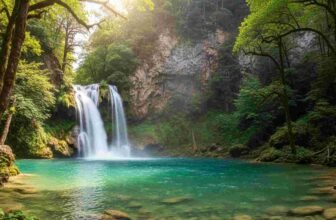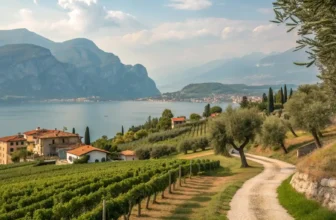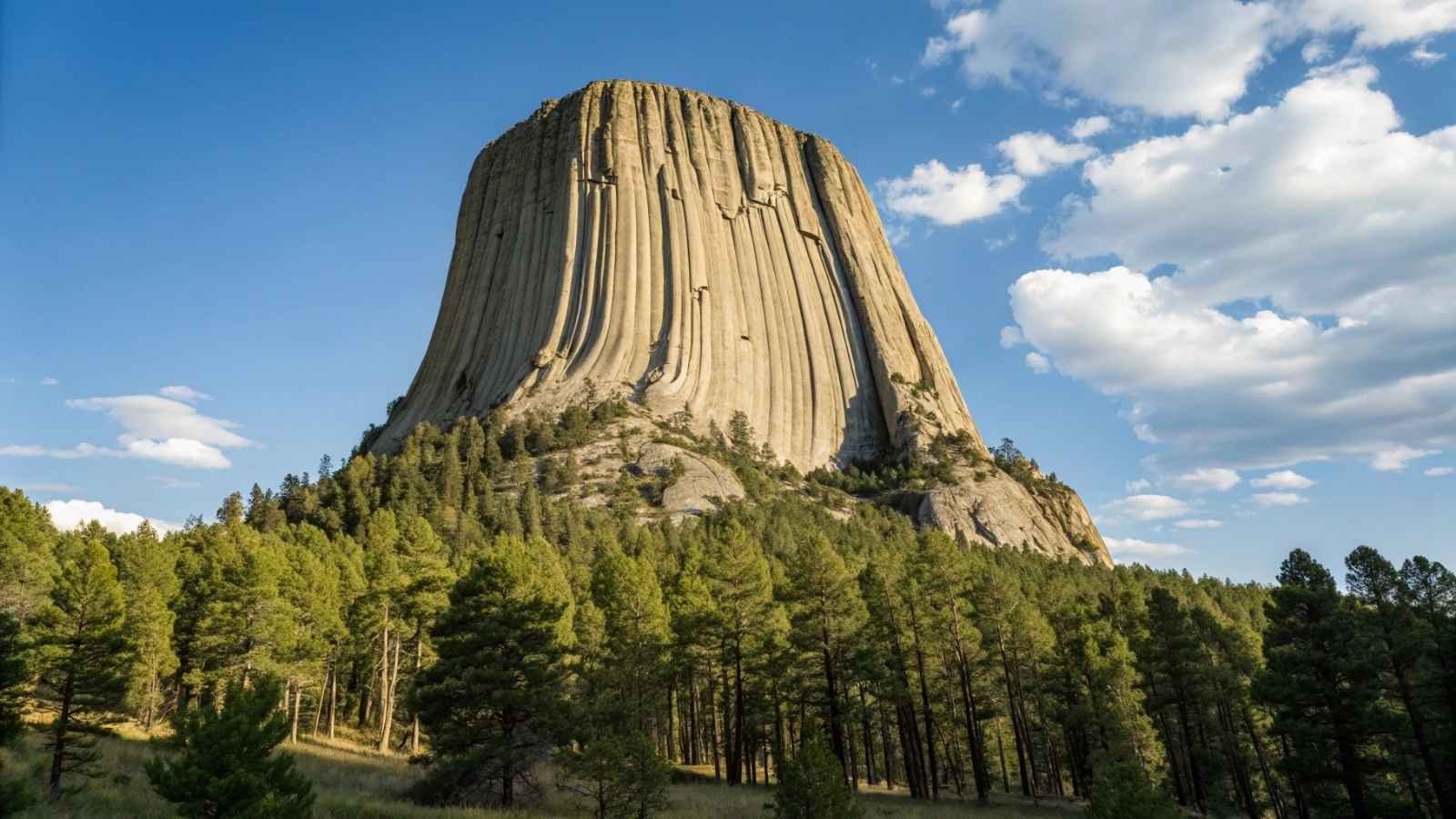
Whispers of wind, roaring water, shifting sands—America holds treasures that don’t ask for tickets or passes, just your presence. Some rise like giants from the earth, others tumble gracefully in endless cascades, while a few glow with colors that seem born from another world.
These are places where nature shows off without boundaries, where awe sneaks up on you and refuses to let go. The best part? They’re wide open, waiting, and accessible without the red tape of national park entry fees. Let’s step into the wild heart of the country and uncover wonders that feel both raw and unforgettable.
1. Niagara Falls, New York
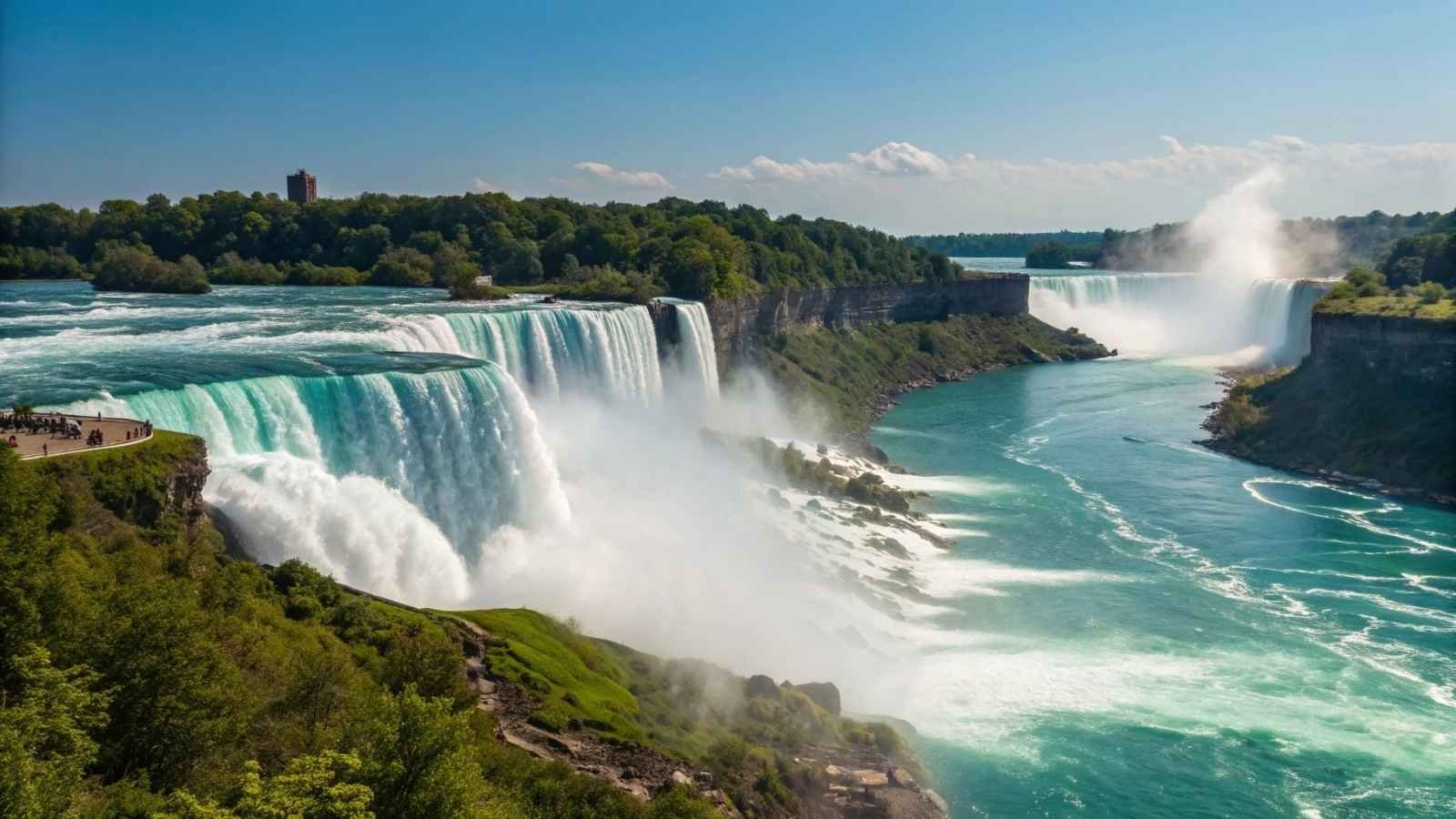
Few natural sights in the U.S. hit you with the same raw force as Niagara Falls. The sheer volume of water—over six million cubic feet flowing every minute—makes it both thunderous and hypnotic. Standing at the edge, you can actually feel the ground vibrate, a reminder of just how alive this place is. The best part? You don’t need a National Park pass to experience one of the most iconic wonders in the country.
There’s more to the falls than just gazing from the observation deck. The Maid of the Mist boat ride gets you close enough to be soaked by the spray, while trails on Goat Island give you unique views of the cascades from different angles. Even in the evening, the falls glow with colorful lights, making nighttime just as magical as the day.
What makes Niagara extra special is how accessible it is. Whether you’re driving in from upstate New York, crossing from Canada, or hopping on a quick flight, it’s one of the easiest natural wonders to add to your travel list without heavy planning.
- Best Months to Visit: May–September for peak water flow and tours; winter for frozen, icy views.
- Closest City: Buffalo, New York (30 minutes away).
- Must-Do Experience: Maid of the Mist boat ride.
- Good to Know: Crowds are heavy in summer, so mornings are best for a calmer experience.
2. Antelope Canyon, Arizona
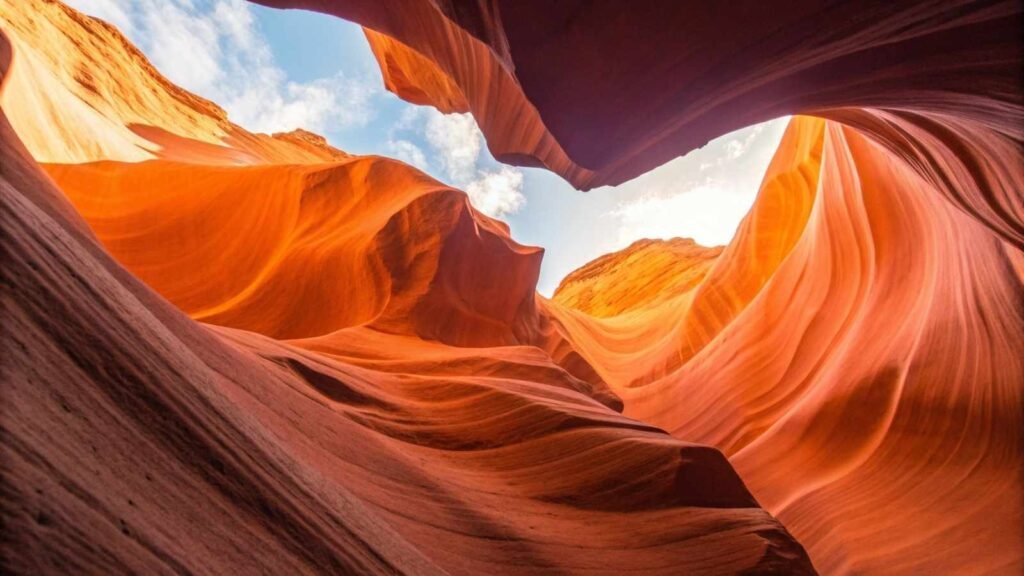
Antelope Canyon is like walking into a natural art gallery carved by wind and water over thousands of years. The swirling sandstone walls create a wave-like effect, glowing in shades of red, orange, and purple depending on how sunlight filters in. It’s not a place where you just walk through—it feels like stepping into another world, one sculpted by time itself.
There are two main sections: Upper Antelope Canyon and Lower Antelope Canyon. The upper canyon is famous for its dramatic light beams that pour through the narrow cracks above, while the lower canyon requires a little more climbing and crouching but rewards you with winding passages that feel more adventurous. Both are on Navajo land, so you’ll need to book a guided tour to enter.
This natural wonder isn’t just about the views, though—it’s about the experience of walking slowly, taking in the silence, and noticing how every turn reveals a new shape or angle. No two photos ever look the same, because the light changes by the minute.
- Best Months to Visit: March–October; midday tours in summer for light beams.
- Closest City: Page, Arizona.
- Must-Do Experience: Upper Canyon for the light beams, Lower Canyon for fewer crowds.
- Good to Know: Book tours months in advance, especially in summer.
3. Horseshoe Bend, Arizona
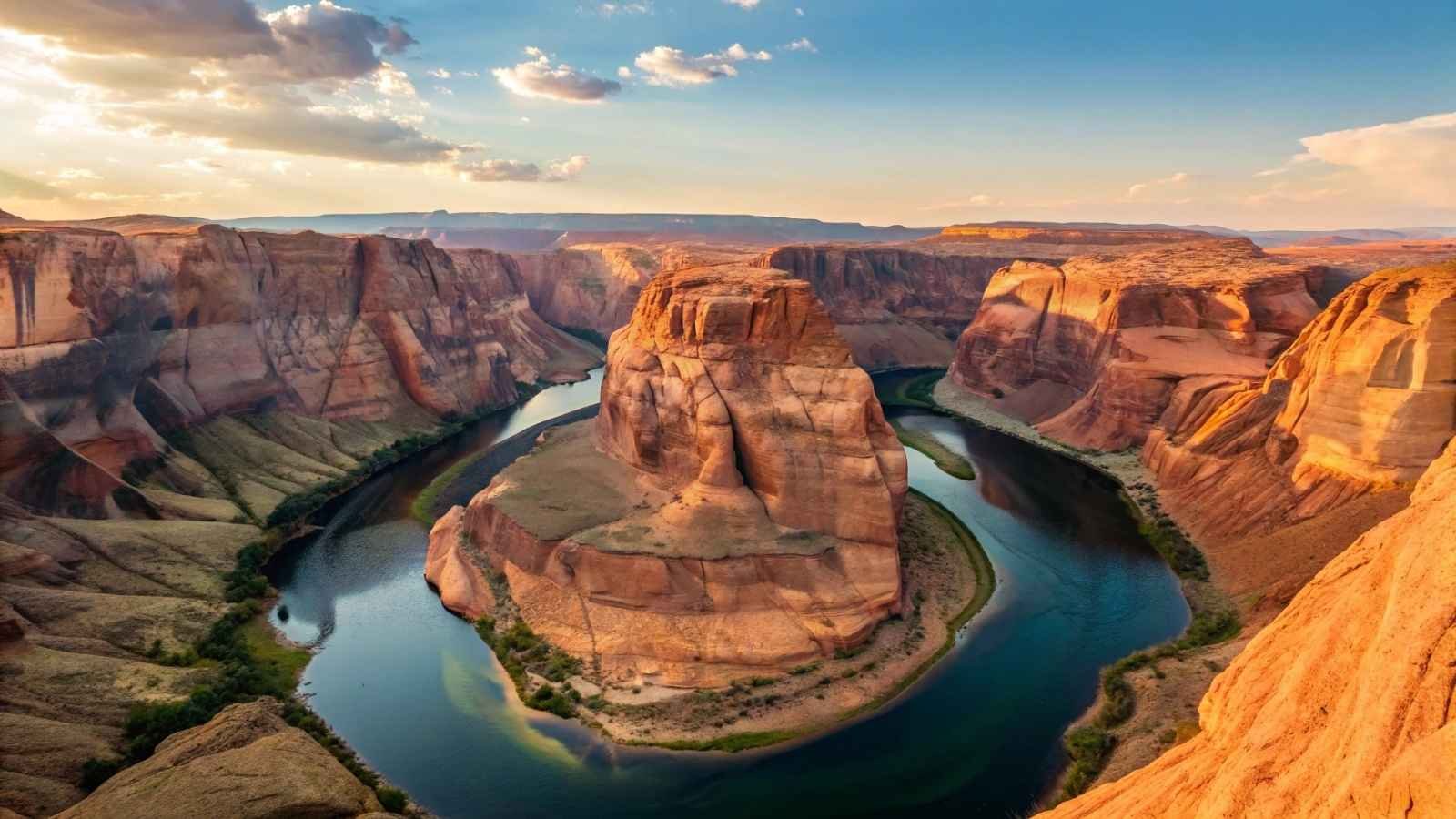
Just a short drive from Antelope Canyon, Horseshoe Bend offers one of the most jaw-dropping views in the Southwest. The Colorado River makes a perfect U-shaped curve here, wrapping around a sandstone mesa in a way that looks almost unreal. Standing at the edge, the view stretches out for miles, with the emerald river cutting sharply against the red canyon walls.
The hike to the overlook is only about 1.5 miles round trip, which makes it incredibly accessible. But don’t let the short distance fool you—this is the desert, so bring water and expect heat, especially during summer afternoons. The reward, though, is standing at one of the most photographed and recognizable natural landmarks in the U.S.
Sunrise and sunset are especially spectacular here, when the sky adds color to an already dramatic scene. Even though it’s popular, the sheer scale of the canyon makes it feel big enough for everyone to find their own quiet moment.
- Best Months to Visit: Spring and fall for cooler temperatures.
- Closest City: Page, Arizona (5 miles away).
- Must-Do Experience: Sunset view for the best colors.
- Good to Know: There are no railings at the edge—watch your step.
4. Multnomah Falls, Oregon
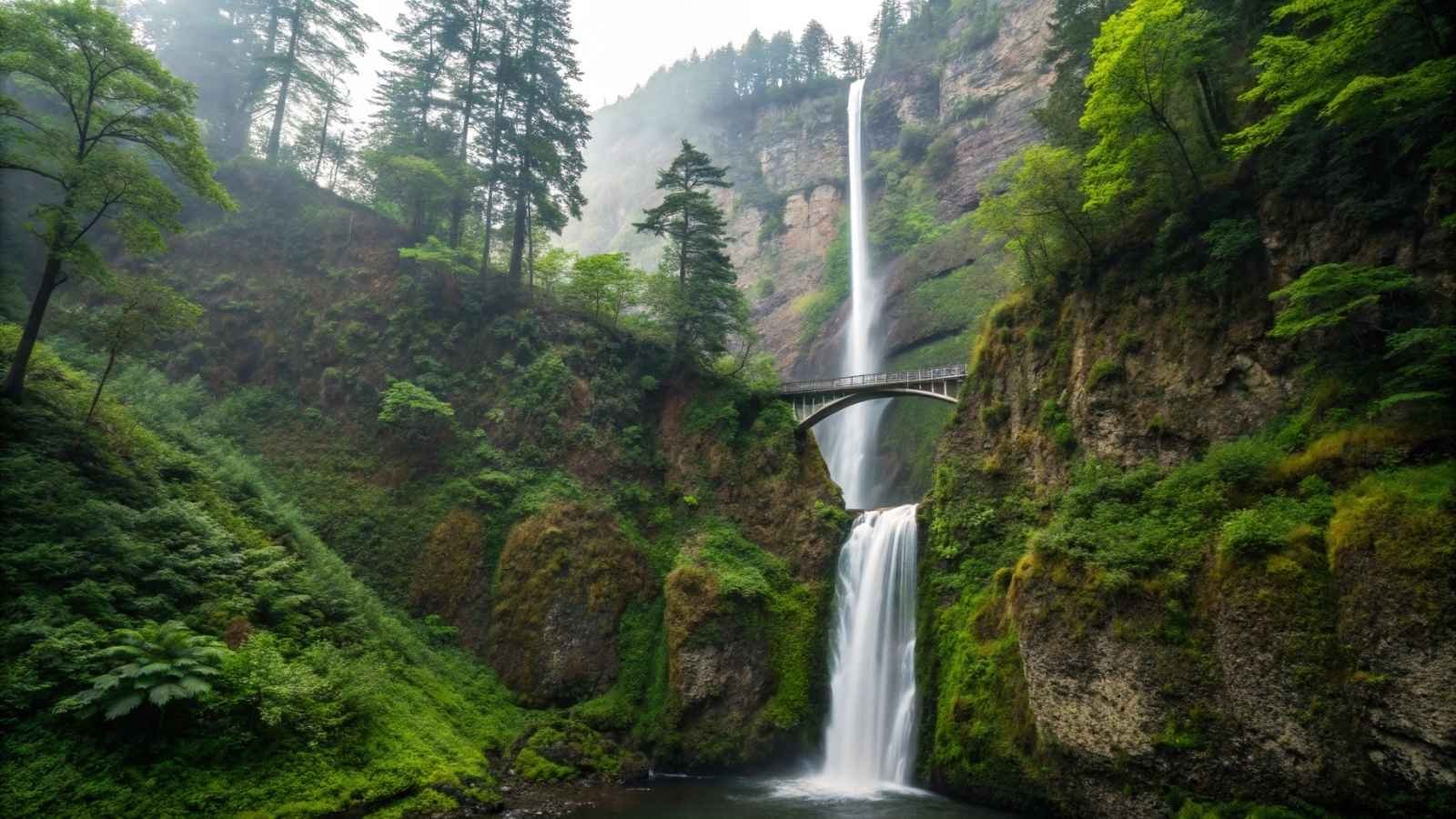
If Niagara Falls is about raw power, Multnomah Falls is about elegance. At 620 feet, it’s Oregon’s tallest waterfall, and it cascades down in two tiers with a graceful bridge spanning the middle. That bridge, Benson Bridge, gives you a front-row seat to the upper falls while letting the mist brush your face.
The falls are just a 30-minute drive from Portland, making them an easy day trip. Trails around the gorge lead to different vantage points, and if you’re up for a workout, you can hike all the way to the top. Even if you’re not hiking, the views from the base are more than enough to leave an impression.
What makes Multnomah unique is how it blends natural beauty with accessibility. You don’t need to trek deep into the wilderness to see it—it’s right off the Columbia River Gorge Scenic Highway, with amenities nearby. That balance of convenience and beauty is why it’s one of the most visited waterfalls in the Pacific Northwest.
- Best Months to Visit: Spring for the strongest water flow; fall for lighter crowds.
- Closest City: Portland, Oregon.
- Must-Do Experience: Walk to Benson Bridge.
- Good to Know: Parking can fill up fast on weekends—go early or midweek.
5. Mount Shasta, California
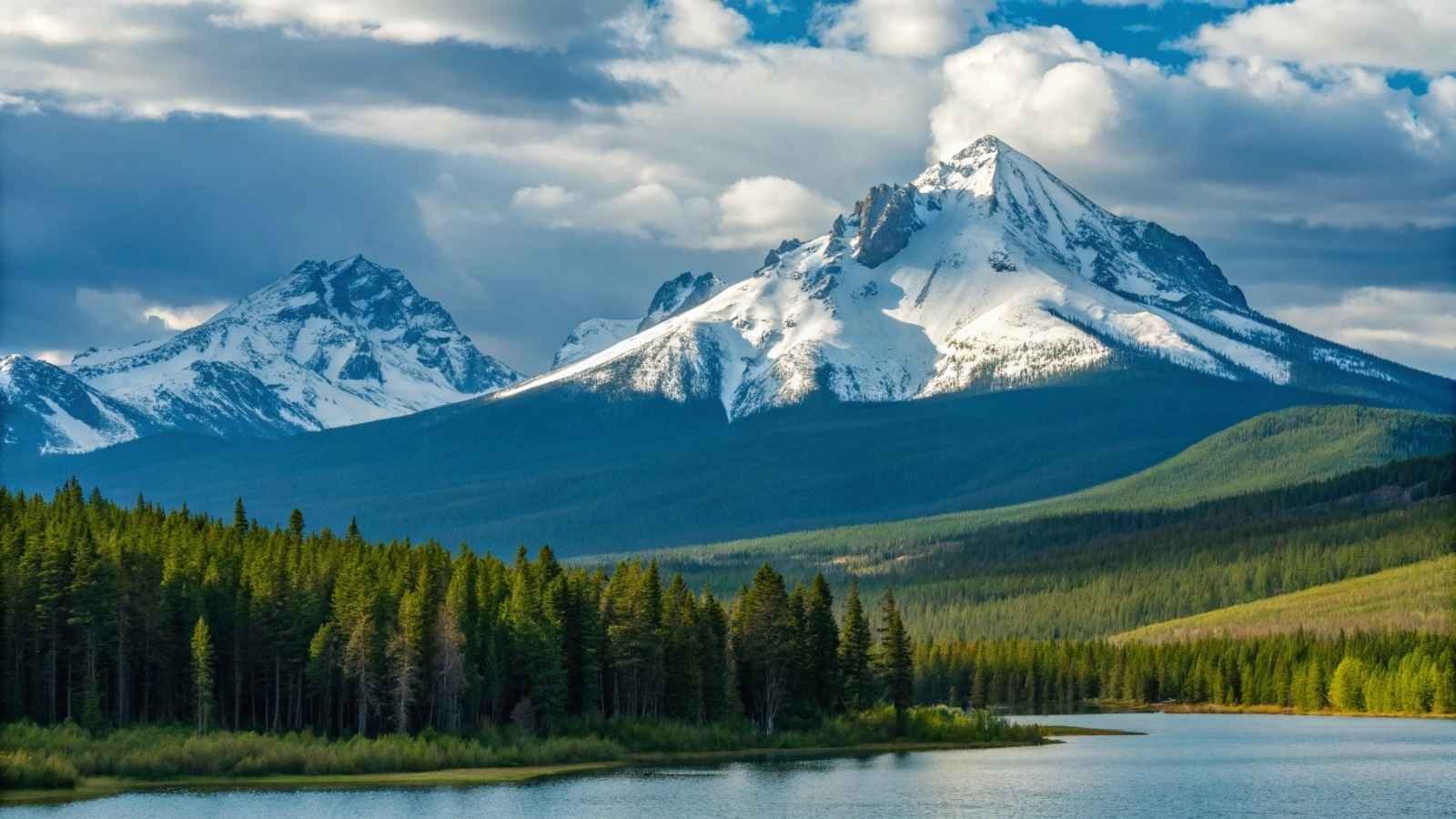
Mount Shasta rises nearly 14,200 feet above Northern California, dominating the skyline like a lone giant. This snow-capped stratovolcano isn’t just beautiful to look at—it’s also a hub for outdoor adventure. From hiking to skiing, it’s a year-round destination that feels both wild and welcoming.
The mountain is surrounded by alpine lakes, meadows, and dense forests, which means there’s more to explore than just the peak itself. Popular hikes like Panther Meadows or Heart Lake offer incredible views without needing to climb to the summit. For those who want a challenge, though, Mount Shasta is also considered a prime spot for serious climbers looking for non-technical mountaineering.
There’s also a unique sense of mystique here. Many locals and visitors alike talk about Mount Shasta as a spiritual place, with legends ranging from hidden civilizations to energy vortexes. Whether or not you believe the stories, it’s hard to deny that the mountain has a presence that leaves an impression.
- Best Months to Visit: June–September for hiking; December–March for skiing.
- Closest City: Mount Shasta City, California.
- Must-Do Experience: Hike Panther Meadows Trail.
- Good to Know: Weather changes quickly—always check conditions before heading out.
6. Havasu Falls, Arizona
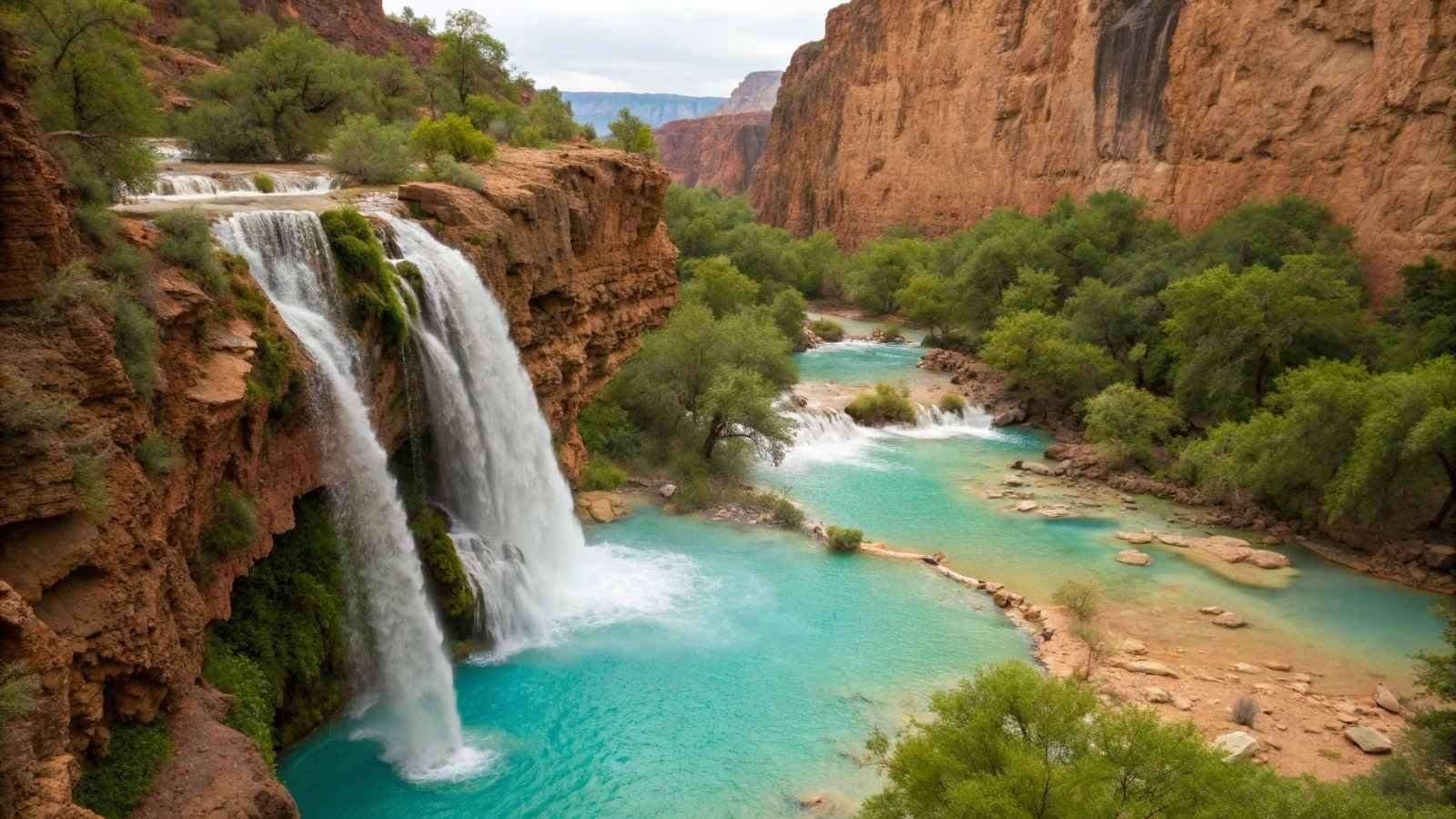
If there’s one waterfall in the U.S. that looks like it was taken straight out of a dream, it’s Havasu Falls. Nestled deep within the Havasupai tribal lands in the Grand Canyon area, its turquoise-blue waters contrast sharply with the surrounding red rock cliffs. The falls drop about 100 feet into crystal-clear pools that are perfect for swimming, making it one of the most photographed waterfalls in the world.
Getting to Havasu Falls isn’t simple—you need a permit from the Havasupai Tribe and a strenuous 10-mile hike (one way) to reach the campground. But that effort adds to its allure. Once you’re there, you’ll find a desert oasis with several waterfalls to explore, including Mooney Falls and Beaver Falls.
The experience of camping beneath the stars, with the sound of rushing water nearby, is something few places can match. It’s both an adventure and a retreat, with the remoteness making it feel like a secret world far from the everyday grind.
- Best Months to Visit: March–May, September–November (summer can be dangerously hot).
- Closest City: Supai, Arizona (via trailhead at Hualapai Hilltop).
- Must-Do Experience: Swim in the turquoise pools beneath Havasu Falls.
- Good to Know: Permits are extremely limited and must be reserved months in advance.
7. Great Salt Lake, Utah
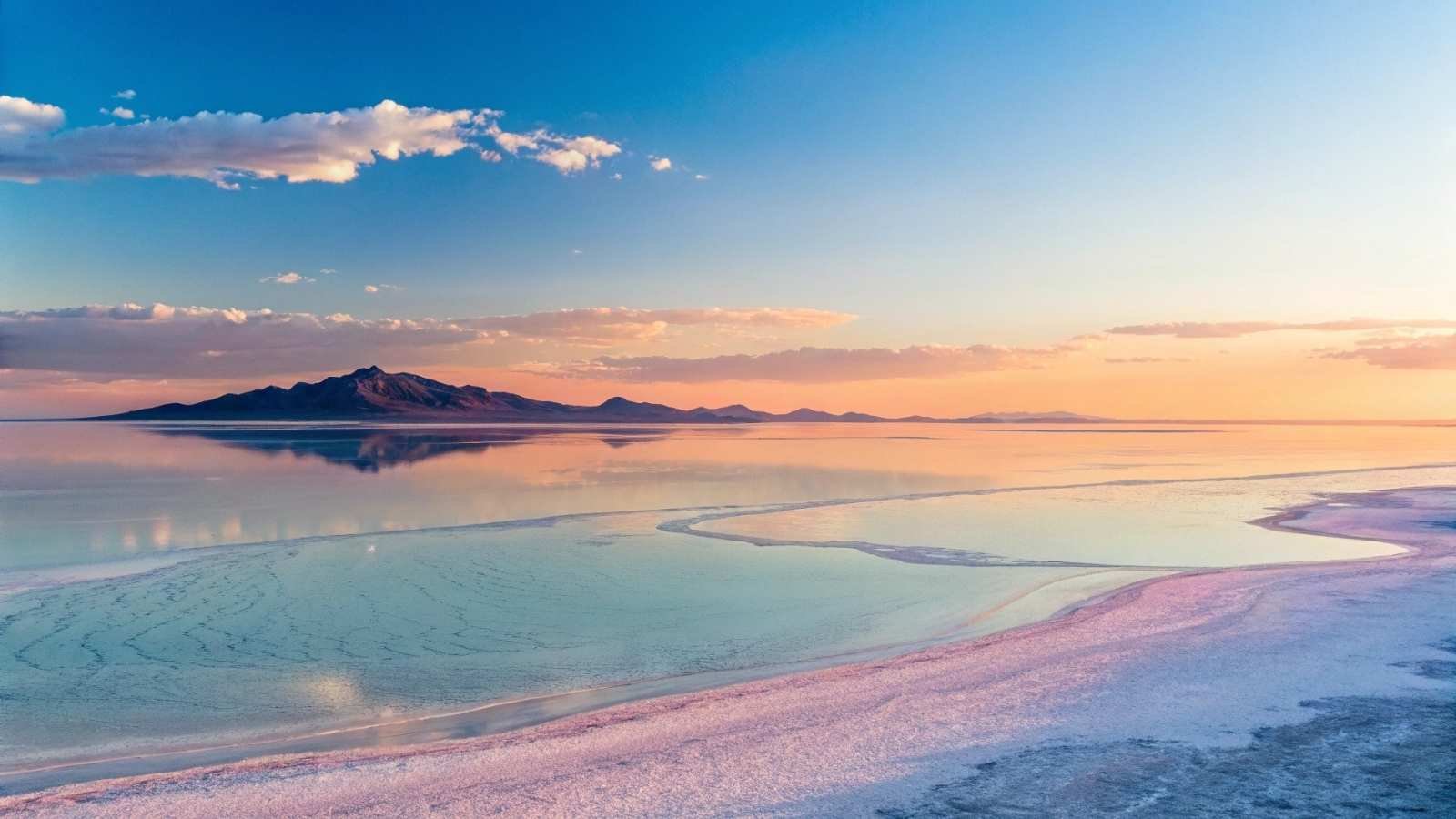
Stretching across northern Utah, the Great Salt Lake is the largest saltwater lake in the Western Hemisphere. What makes it so fascinating is its otherworldly quality—the shimmering water reflects the sky in a way that can feel almost surreal, especially at sunset. The lake’s high salinity also means you can float effortlessly, a quirky experience that never gets old.
The lake is surrounded by unique landscapes, including Antelope Island, where you can spot bison roaming freely. It’s also a haven for birdwatchers, with millions of migratory birds stopping here each year. Whether you’re into wildlife, photography, or just enjoying an unusual swim, the Great Salt Lake has something distinctive to offer.
Yes, it can smell salty and a bit pungent at times, but that’s part of its raw, natural character. It’s a place that feels unlike anywhere else in the U.S., and standing on its shores with the Wasatch Mountains in the distance is something you don’t forget.
- Best Months to Visit: Spring and fall for mild weather.
- Closest City: Salt Lake City, Utah.
- Must-Do Experience: Sunset views from Antelope Island.
- Good to Know: Water levels fluctuate dramatically, which changes access points and beaches.
8. Garden of the Gods, Colorado
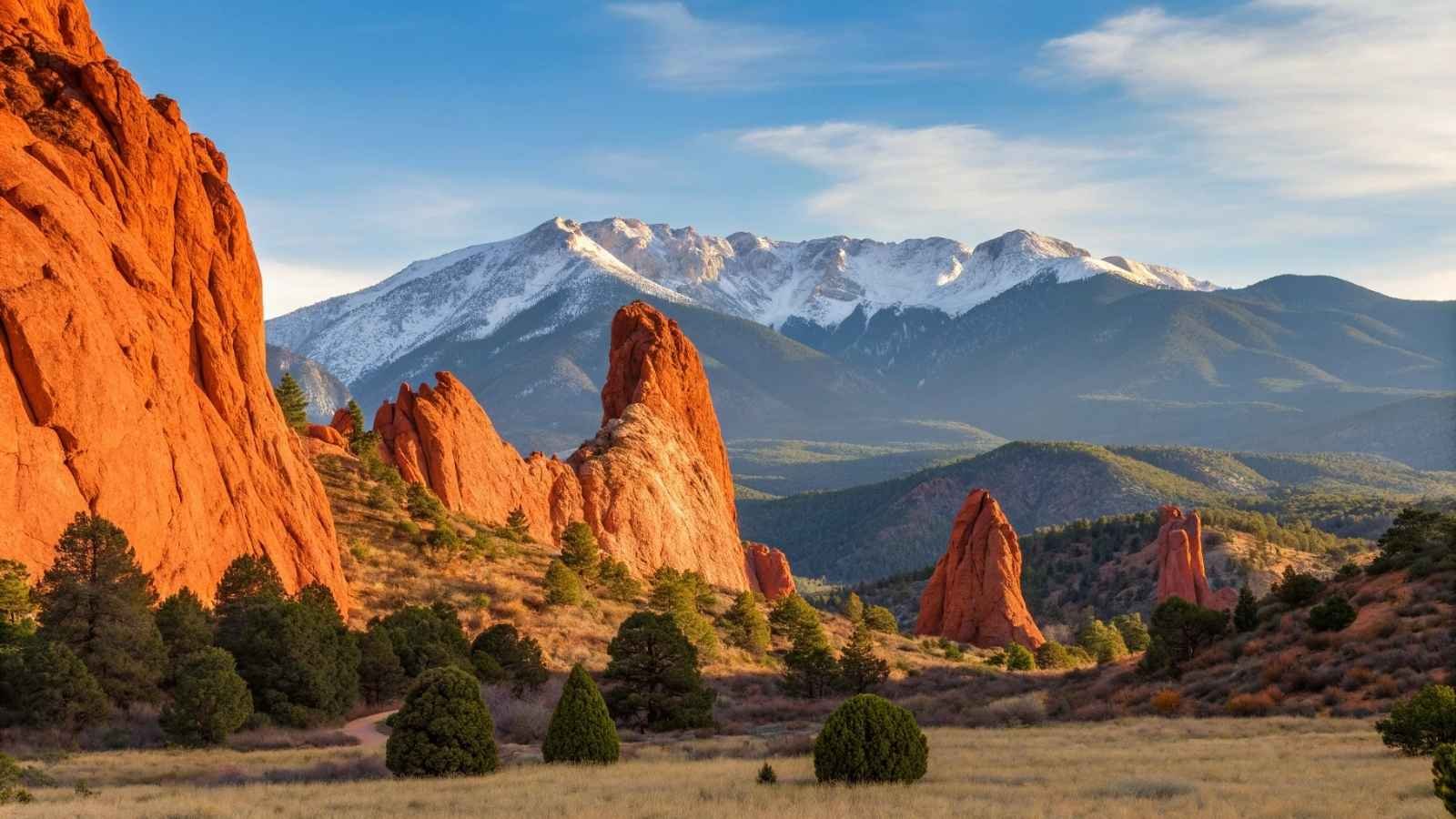
Just outside Colorado Springs lies Garden of the Gods, a free public park filled with dramatic red sandstone rock formations. These towering spires and fins seem to rise suddenly out of the earth, set against the backdrop of snow-capped Pikes Peak. It’s no wonder the site has been called one of the most beautiful urban parks in the country.
The park offers more than 15 miles of trails, ranging from easy strolls to more rugged hikes. Rock climbers love it for the challenge, while casual visitors can simply wander the paved paths for unforgettable views. The mix of towering rocks and wide-open skies makes every angle worth a pause.
One of the best parts? It’s completely free. Despite its accessibility, it doesn’t lose its sense of grandeur. Watching the sun light up the red rocks in the early morning or late afternoon is a sight that rivals many national parks.
- Best Months to Visit: Year-round; spring and fall for best weather.
- Closest City: Colorado Springs, Colorado.
- Must-Do Experience: Walk the Central Garden Trail for the most iconic formations.
- Good to Know: Sunrise and sunset bring the best light and fewer crowds.
9. Mount Hood, Oregon
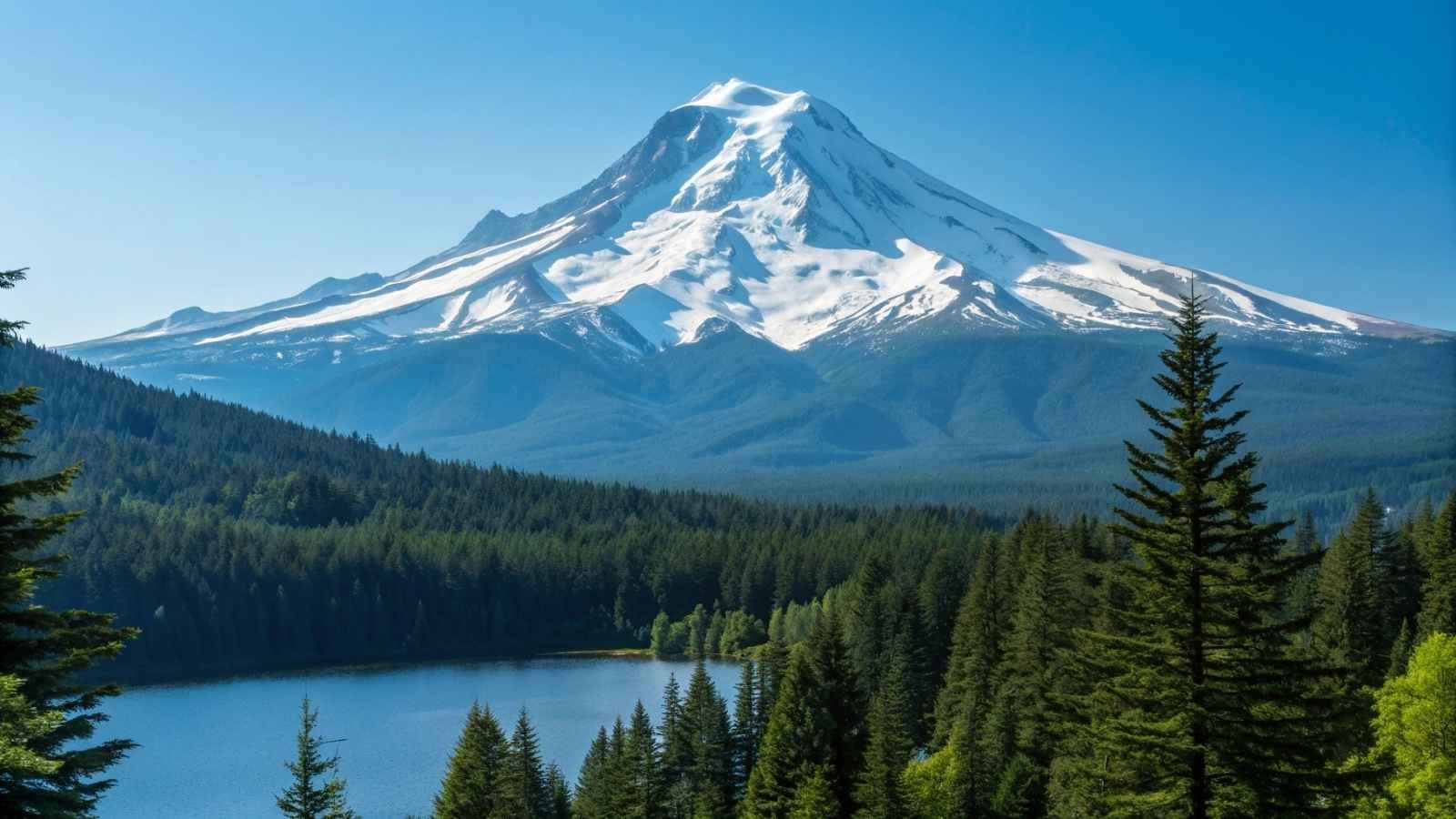
Standing tall at over 11,000 feet, Mount Hood is Oregon’s highest peak and a playground for outdoor enthusiasts. Its snow-covered summit dominates the landscape east of Portland, offering skiing in winter and lush hiking trails in summer. It’s also home to Timberline Lodge, a historic alpine lodge that’s a destination in itself.
The mountain isn’t just for climbers—there are scenic byways that circle it, dotted with alpine lakes perfect for kayaking or simply relaxing. Trillium Lake, with Mount Hood reflecting on its surface, is one of the most iconic views in the Pacific Northwest.
What makes Mount Hood especially appealing is its year-round accessibility. You can ski nearly all year on its glaciers, hike through wildflower meadows in summer, or sip hot cocoa in front of a lodge fireplace when the snow is falling. It’s a mountain that always has something to offer.
- Best Months to Visit: June–September for hiking; November–April for skiing.
- Closest City: Portland, Oregon (about 1.5 hours away).
- Must-Do Experience: Trillium Lake view of Mount Hood.
- Good to Know: Weather shifts quickly; always pack layers.
10. Mono Lake, California
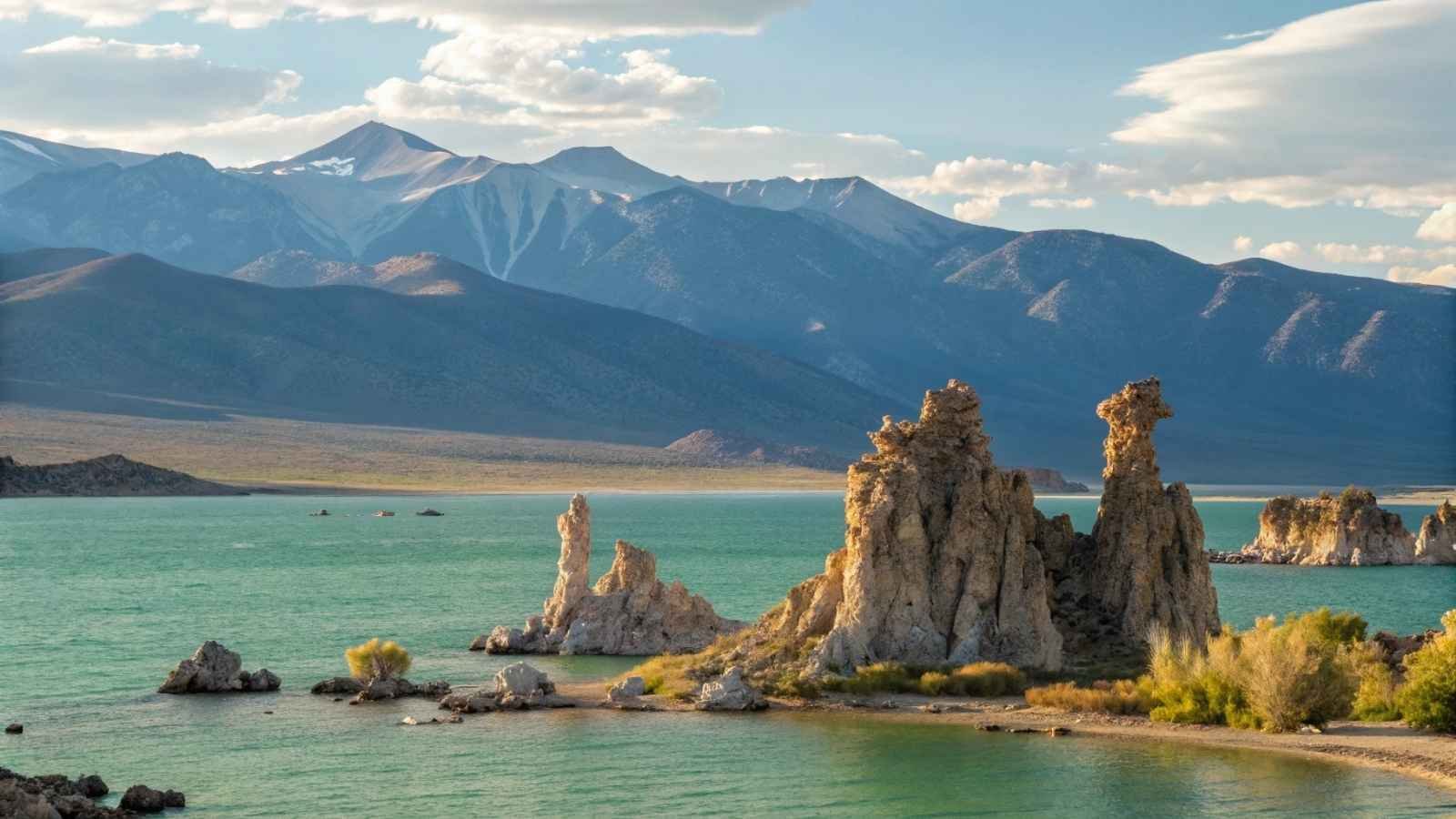
In eastern California, not far from Yosemite, lies Mono Lake, one of the most unusual natural wonders in the U.S. What sets it apart are the tufa towers—odd limestone formations that rise out of the lake, looking like something from another planet. They were formed over centuries as freshwater springs interacted with the lake’s alkaline water.
Mono Lake is also incredibly salty—about two to three times saltier than the ocean—creating an ecosystem where brine shrimp thrive. This abundance of shrimp attracts millions of migratory birds, making it one of the best spots for birdwatching in the West. The sight of thousands of birds soaring above the eerie tufa formations is unforgettable.
With the Sierra Nevada mountains as a backdrop, Mono Lake combines strange beauty with serenity. It’s not the kind of place you go for adrenaline-pumping adventure, but for quiet wonder. A simple walk along the shoreline feels like stepping into a landscape you won’t find anywhere else.
- Best Months to Visit: May–October for warm weather and bird activity.
- Closest City: Lee Vining, California.
- Must-Do Experience: South Tufa Area for the most dramatic formations.
- Good to Know: Sunrise and sunset bring the most striking colors.
11. Shiprock, New Mexico
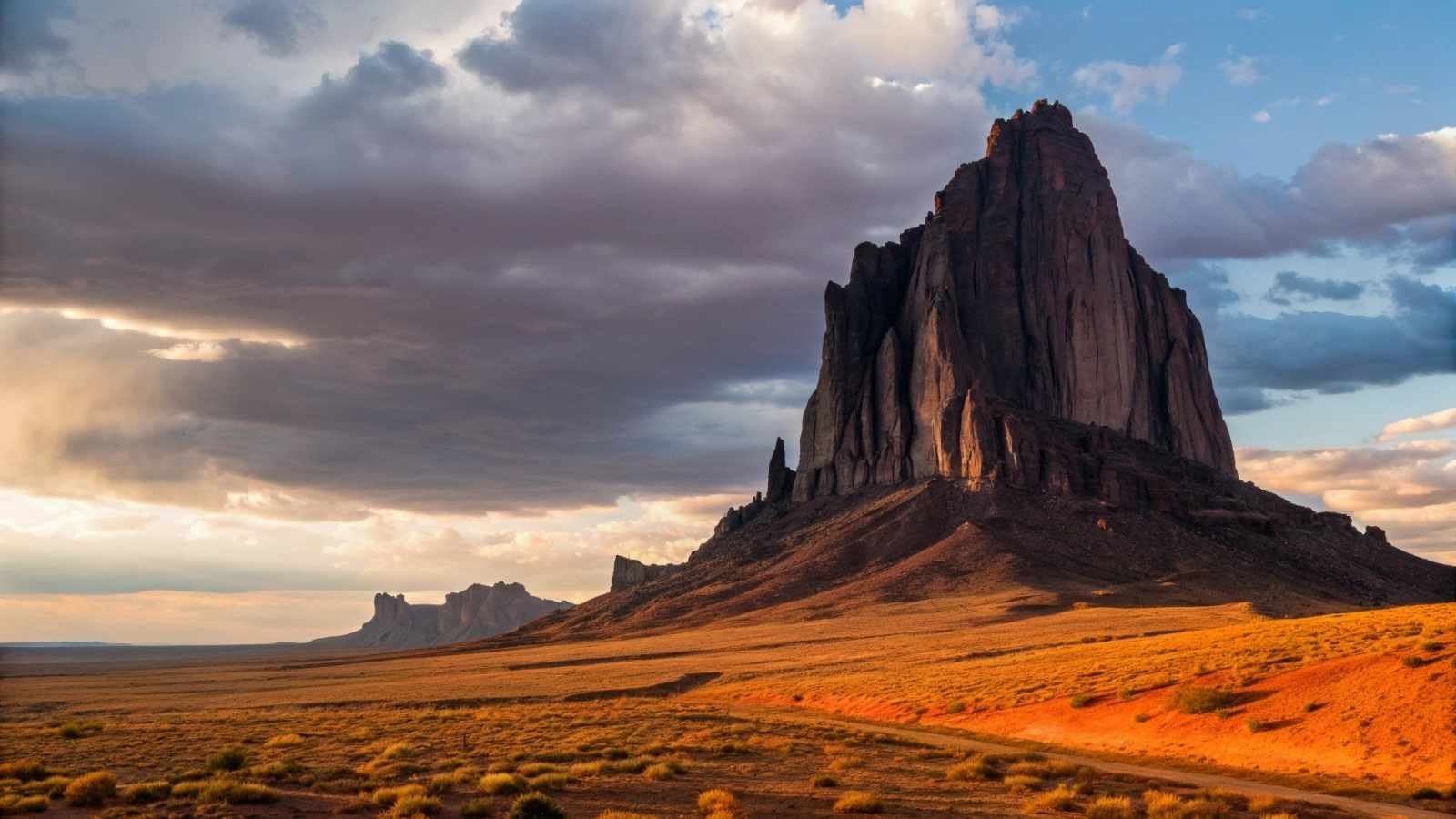
Rising abruptly from the desert floor, Shiprock is a volcanic rock formation that looks like something out of science fiction. At nearly 1,600 feet tall, it dominates the otherwise flat landscape of northwestern New Mexico. To the Navajo Nation, it’s more than just a striking landmark—it’s a sacred site tied deeply to their culture and legends.
While climbing is prohibited to honor its cultural significance, you can admire Shiprock from multiple vantage points along nearby roads and trails. The way it shifts in color and shadow throughout the day makes it endlessly photogenic. At sunset, the silhouette is especially dramatic, cutting sharply against the fiery desert sky.
Part of what makes Shiprock so memorable is its isolation. There’s nothing else like it nearby, which approaches feel like you’re discovering a hidden giant standing guard over the desert.
- Best Months to Visit: Spring and fall for mild desert weather.
- Closest City: Shiprock, New Mexico.
- Must-Do Experience: Sunset viewing from Highway 491.
- Good to Know: Respect the Navajo Nation land—access is limited to viewing only.
12. Natural Bridge, Virginia
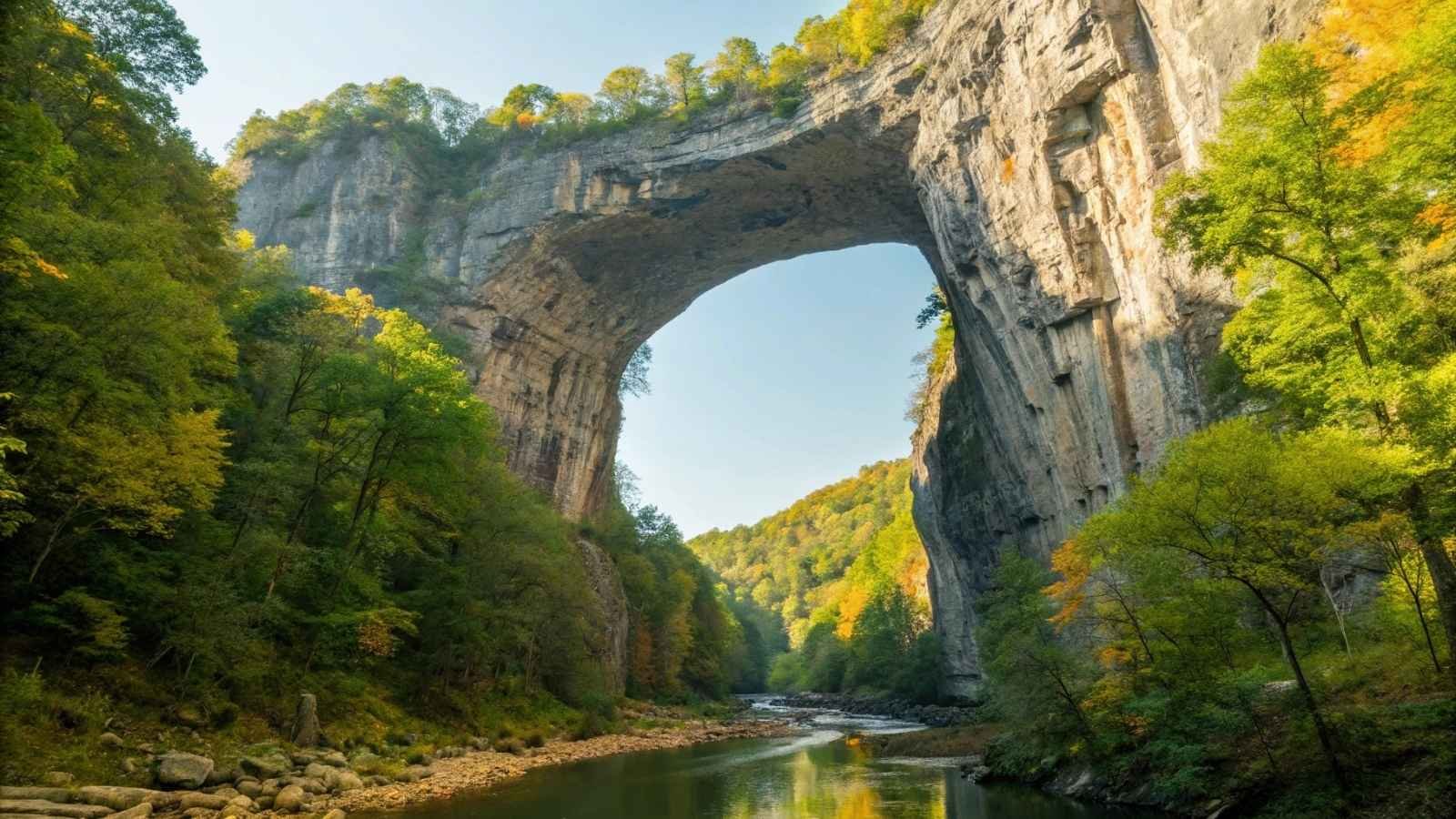
Tucked into the Blue Ridge Mountains, Natural Bridge is exactly what the name promises—a massive natural limestone arch carved out over millennia by Cedar Creek. Standing 215 feet high, it’s taller than Niagara Falls and once left Thomas Jefferson so captivated that he bought the land surrounding it.
Walking under the arch gives you a real sense of scale. The cool shade and sound of the creek make it a peaceful escape, while the history layered into the site adds another level of intrigue. Indigenous peoples considered it sacred long before it caught the attention of early settlers.
Beyond the bridge itself, the area offers hiking trails and nearby caverns, making it an easy half-day adventure. Its mix of geology and history makes it one of Virginia’s standout natural wonders.
- Best Months to Visit: April–October.
- Closest City: Lexington, Virginia.
- Must-Do Experience: Walk beneath the arch along Cedar Creek Trail.
- Good to Know: Now part of Natural Bridge State Park—no national pass required.
13. Devils Tower, Wyoming
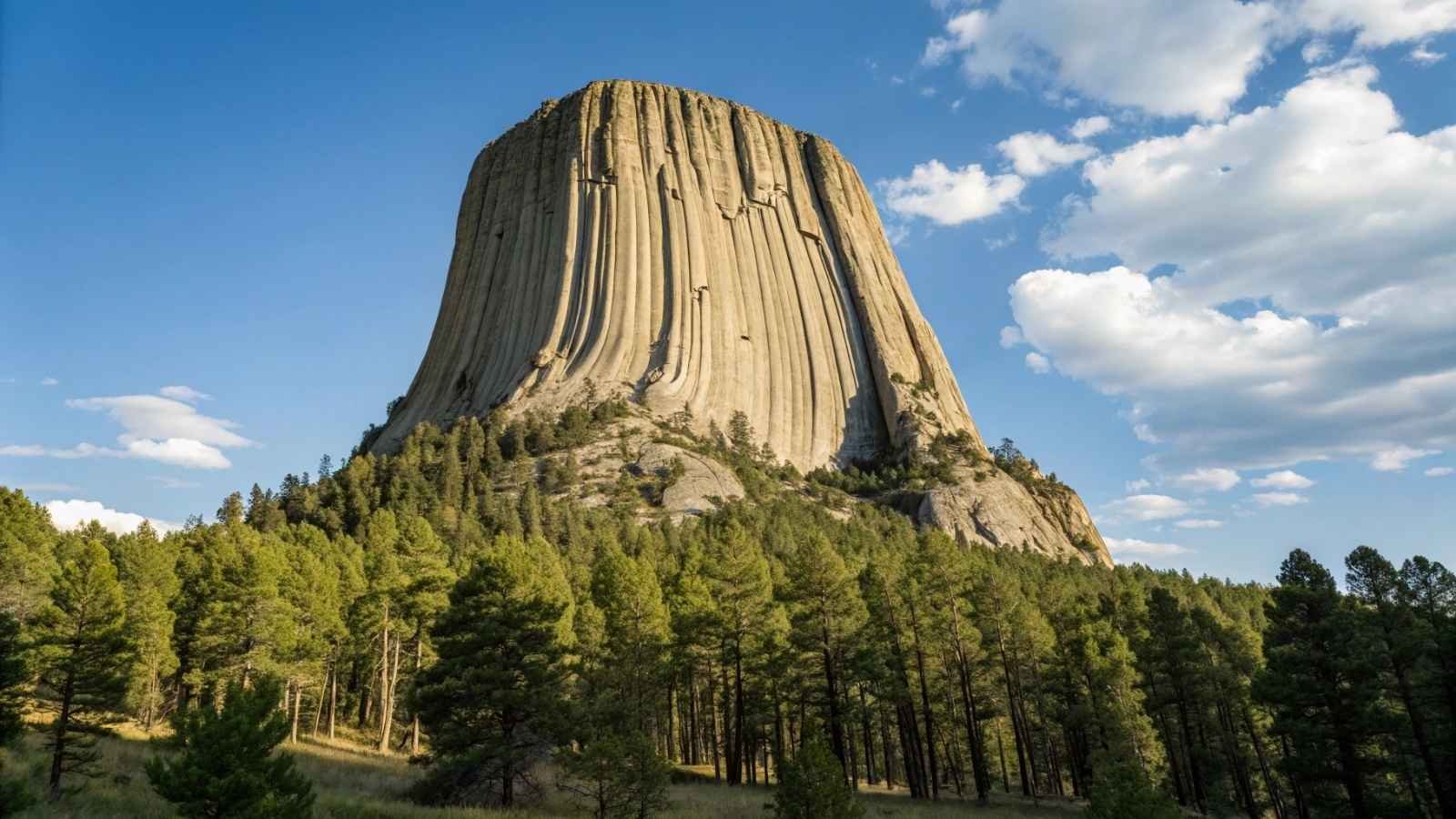
Few landmarks are as instantly recognizable as Devils Tower, a giant column of igneous rock that rises 867 feet above the surrounding prairie. Its vertical grooves give it a striking, almost otherworldly appearance, and it’s no wonder it played a starring role in Close Encounters of the Third Kind.
For Native American tribes, Devils Tower is sacred, and it remains an important cultural site. Visitors can walk the base trail to circle the tower, offering views from every angle. Climbers from around the world also take on its challenging vertical walls, making it a hub for adventure as well as reflection.
The setting is surprisingly serene. Prairie grasses, pine forests, and wildlife surround the tower, creating a contrast between rugged rock and gentle landscape. That combination makes it one of the most unique natural wonders in the U.S.
- Best Months to Visit: May–September.
- Closest City: Hulett or Sundance, Wyoming.
- Must-Do Experience: Tower Trail hike around the base.
- Good to Know: Tribal ceremonies sometimes limit climbing access—check ahead.
14. White Sands, New Mexico
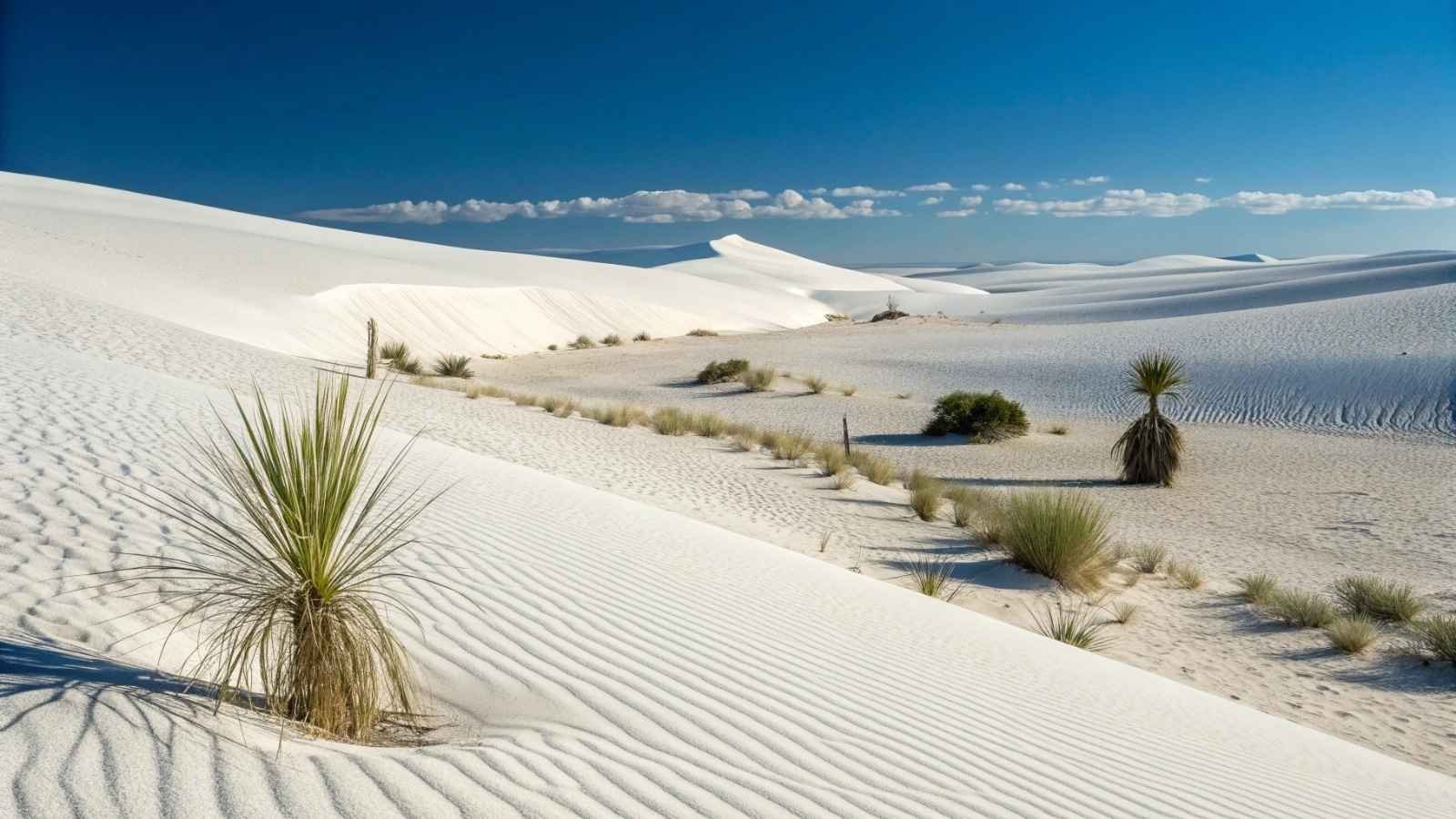
Spread across southern New Mexico is White Sands National Park, a sea of gypsum dunes that stretches as far as the eye can see. Unlike ordinary sand, these dunes are dazzlingly white, creating a landscape that feels like snow in the desert. Walking barefoot here is surprisingly cool and soft, even on a summer day.
The dunes are constantly shifting with the wind, so every visit feels a little different. Families love bringing sleds to slide down the sandy slopes, while photographers chase the changing light as shadows ripple across the dunes. At sunset, the landscape glows in shades of gold and violet.
Despite its otherworldly vibe, White Sands is easy to explore. The Dunes Drive offers a loop through the heart of the park, with plenty of pullouts for short walks or longer treks. It’s playful and serene all at once.
- Best Months to Visit: October–April for cooler weather.
- Closest City: Alamogordo, New Mexico.
- Must-Do Experience: Sunset over the dunes.
- Good to Know: Bring sunglasses—the glare from the white sand can be intense.
15. Watkins Glen Gorge, New York
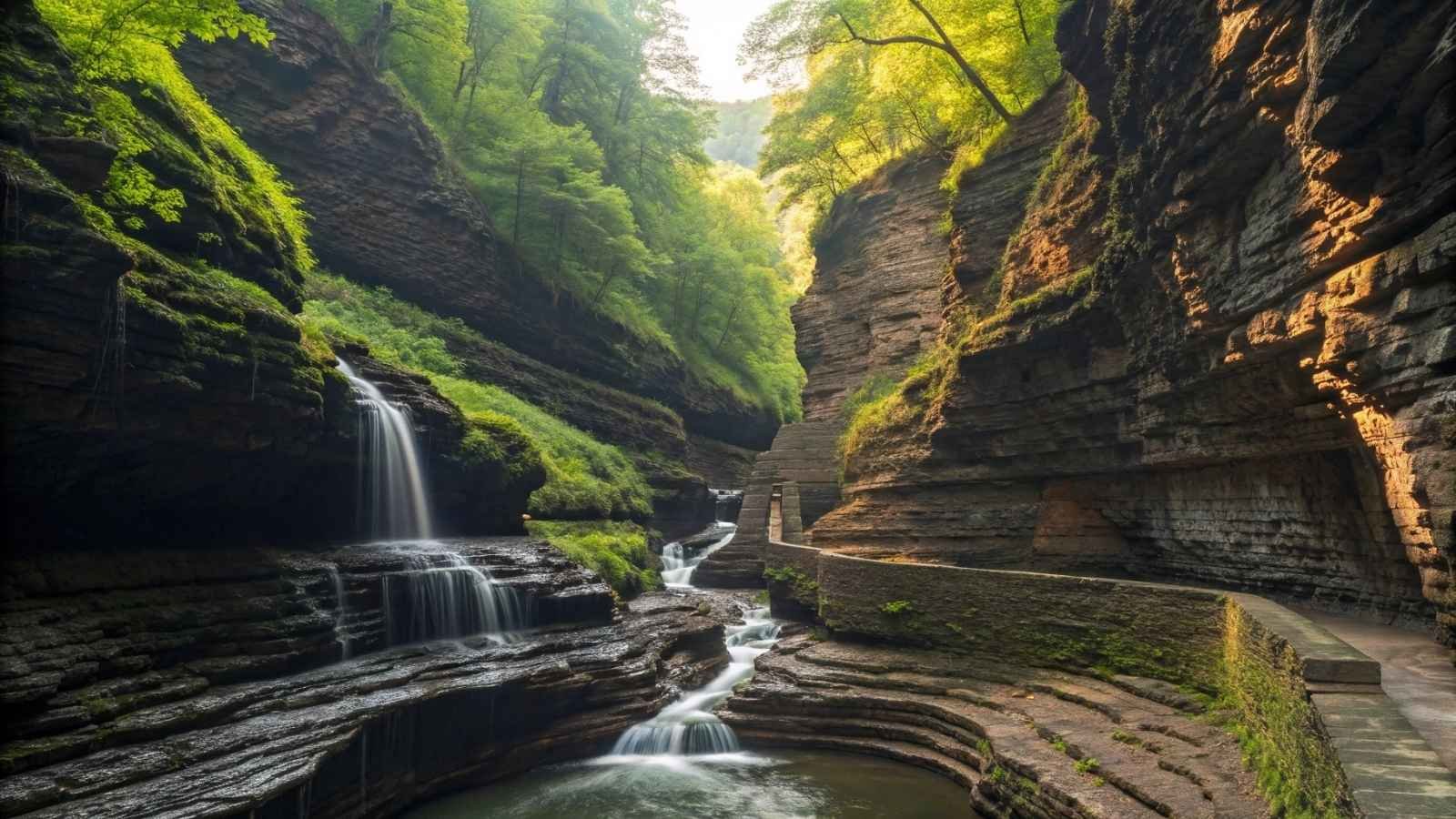
In the heart of the Finger Lakes, Watkins Glen Gorge feels like stepping into a fairytale canyon. Over a two-mile stretch, Glen Creek flows through the gorge, tumbling over 19 waterfalls and carving out natural stone steps, pools, and caves. The main Gorge Trail winds through it all, often hugging the rock walls so closely that you can feel the spray of the falls as you walk.
It’s not just the waterfalls that impress—it’s the atmosphere. Moss-covered walls, arched stone bridges, and twisting pathways make it one of the most enchanting hikes in the Northeast. Each turn reveals a new cascade, and the sound of rushing water follows you the whole way.
Because it’s right in the village of Watkins Glen, it’s also one of the most accessible natural wonders. You don’t need a wilderness trek to find beauty here—it’s all packed into a short, magical trail.
- Best Months to Visit: May–October (the trail is closed in winter).
- Closest City: Watkins Glen, New York.
- Must-Do Experience: Gorge Trail from start to finish.
- Good to Know: Go early in the day to avoid crowds.
16. Sleeping Bear Dunes, Michigan
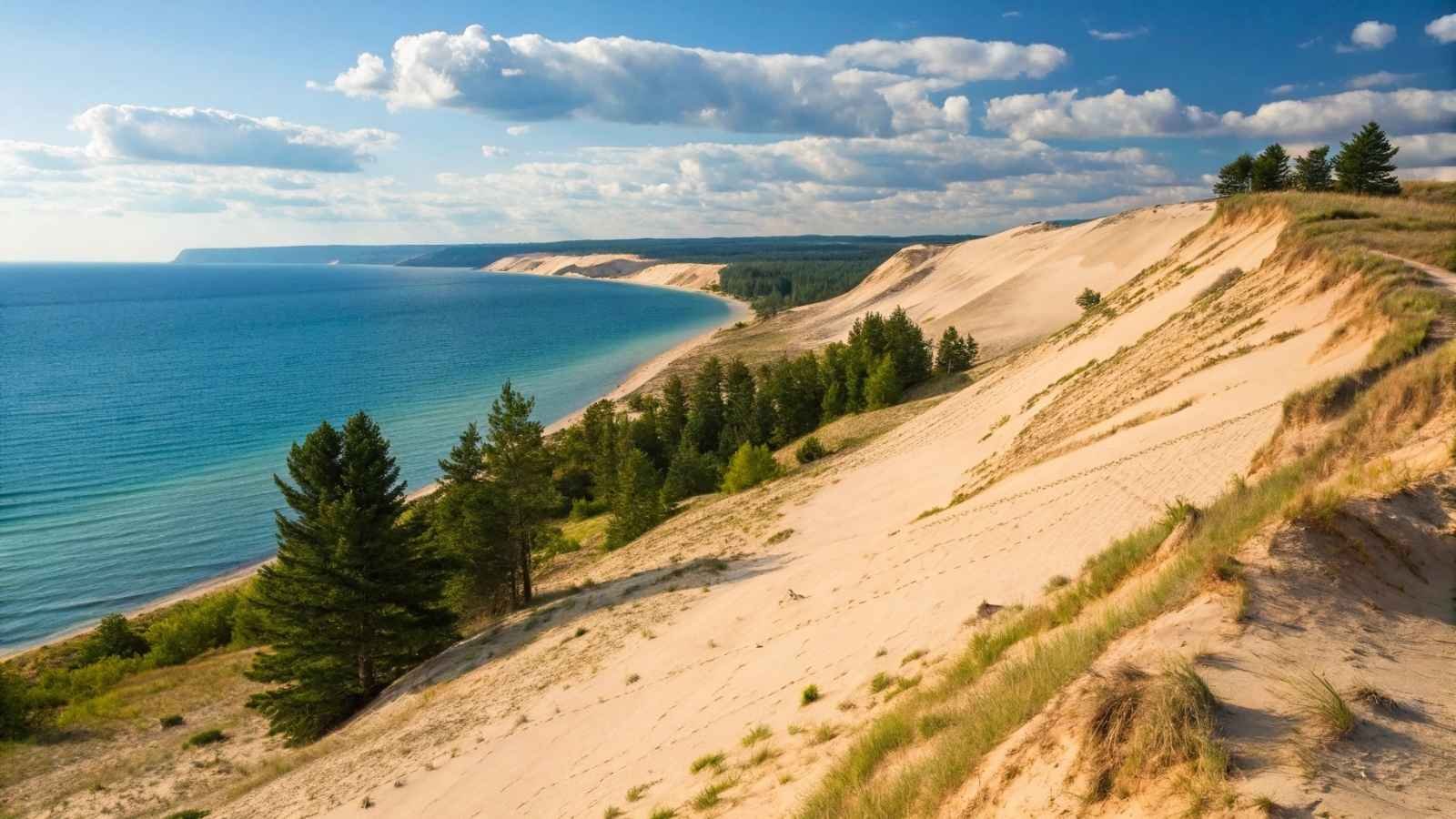
On the shores of Lake Michigan, Sleeping Bear Dunes rise dramatically above the water, some towering over 400 feet high. From the top, the view stretches endlessly across turquoise waters that look more like the Caribbean than the Midwest. The dunes themselves invite adventure, from heart-pounding climbs to exhilarating runs back down.
What makes this spot unique is the blend of lake and dune environments. You can spend the morning hiking the Dune Climb, then cool off with a swim in Lake Michigan’s crystal-clear waters. The area also has scenic drives, historic villages, and forest trails, giving you plenty of variety in one destination.
The name “Sleeping Bear” comes from an Ojibwe legend, adding a layer of cultural depth to the beauty. Whether you’re up for an active climb or a quiet sunset view, this corner of Michigan delivers both thrill and tranquility.
- Best Months to Visit: June–September for beach weather; fall for colorful foliage.
- Closest City: Traverse City, Michigan.
- Must-Do Experience: The Dune Climb followed by a swim in Lake Michigan.
- Good to Know: The climb is harder than it looks—bring water and pace yourself.



